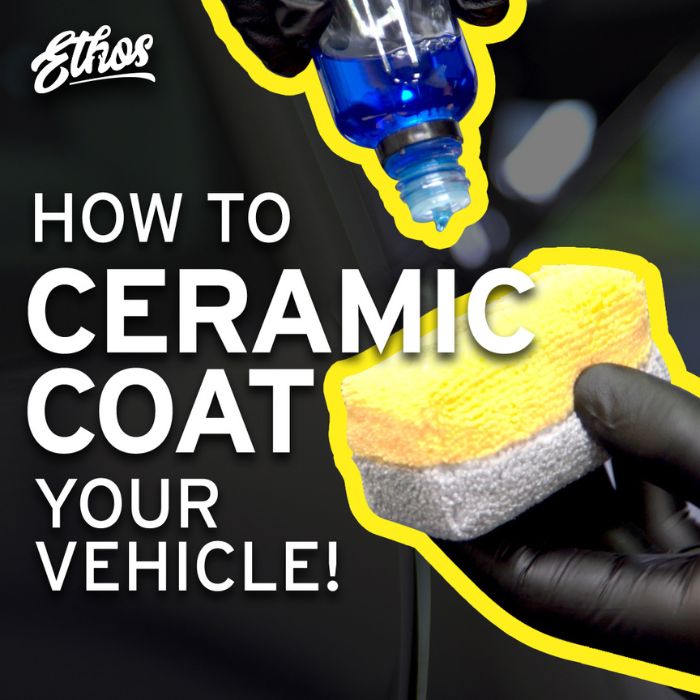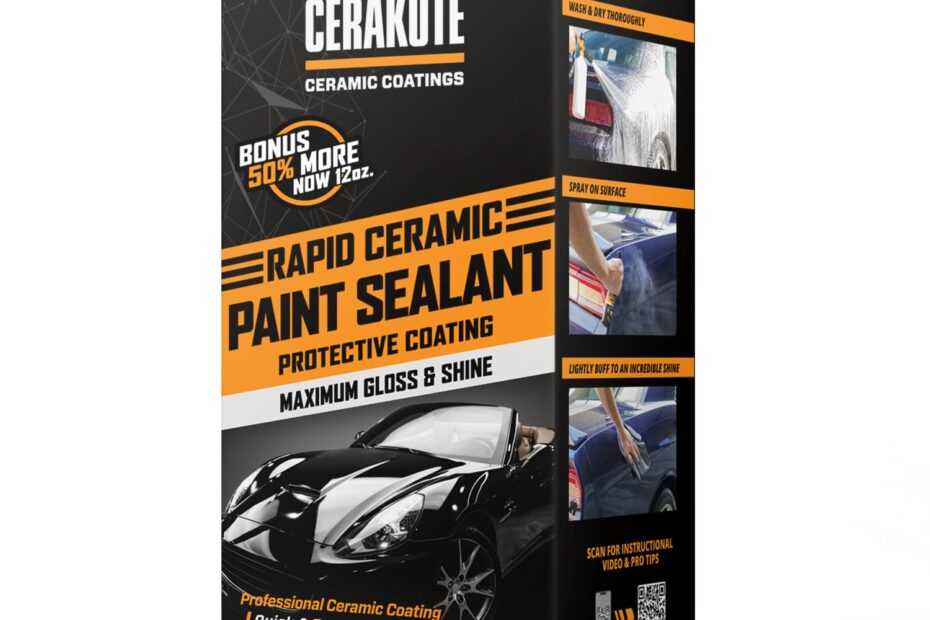To remove ceramic coating from a car, use a chemical remover designed for this purpose or clay barring with subsequent polishing. Sanding should be a last resort due to potential damage to the car’s paint.
Ceramic coatings protect a car’s paint, offering a shield against contaminants and minor scratches. Yet, there comes a time when this protective layer needs removal—perhaps for reapplication or due to deterioration. An essential step in preserving the integrity of the underlying paint is selecting the right method to strip away the coating.
Striking the balance between efficiency and caution, most people turn to chemical removers as reliable solutions. These products work to break down the ceramic bonds allowing for a straightforward removal process. Alternative methods include clay bars, which mechanically remove the coating, or machine polishing, which abrades the surface. The goal is to always maintain the vehicle’s appearance while ensuring its protection for years to come.

Credit: avalonking.com
Introduction To Ceramic Coating Removal
Ceramic coatings on cars offer protection and shine, but there are times when removal is needed. Whether you’re dealing with wear and tear, improper application, or preparing for a fresh coat, understanding the removal process is crucial. This guide will help you navigate the reasons for removal and precautions to take before starting.
Reasons For Removing Ceramic Coating
Several reasons might lead you to consider removing a ceramic coating:
- Deterioration: Over time, coatings can break down.
- Appearance: Scratches or swirl marks may prompt removal.
- Reapplication: Starting fresh ensures the best results.
Precautions Before Starting The Process
Safety and care are top priorities before you begin:
- Wear protective gear like gloves and masks.
- Choose a well-ventilated area to work in.
- Ensure you have the right tools and products.

Credit: ethoscarcare.com
Initial Cleaning And Preparation
Removing ceramic coating from your car starts with initial cleaning and preparation. The right approach ensures you protect the paint while removing the coating. Here’s a step-by-step guide to prep your car properly.
Washing The Car
Clean your car thoroughly. A spotless surface is vital.
- Use high-quality car shampoo.
- Employ the two-bucket method to avoid scratches.
- Remove all dirt and grime.
- Focus on one section at a time.
- Rinse off soap completely.
Drying And Decontaminating The Surface
After washing, drying is crucial. A clean, dry surface is mandatory before decontamination.
- Use a microfiber towel to dry.
- Avoid air drying to prevent water spots.
- Inspect the surface for contaminants.
- Apply a clay bar to a fully dry surface.
- Ensure a smooth finish before proceeding.
Choosing The Right Products
Choosing the Right Products to remove ceramic coating from your car requires thoughtful consideration. The right approach keeps your car’s paint safe. It also ensures you won’t waste time and money.
Chemical Removers Vs. Mechanical Methods
Different methods exist for stripping ceramic coatings. Chemical removers and mechanical methods are popular choices. A side-by-side comparison guides your decision:
| Chemical Removers | Mechanical Methods |
|---|---|
| Use specific chemicals to break down the coating. | Involve physical action like sanding or polishing. |
| Require safety gear to protect skin and eyes. | Need professional tools like sanders or polishers. |
| Work faster but can harm the paint if not used carefully. | Take more time but provide controlled removal. |
Product Safety And Effectiveness
Selecting safe and effective products is crucial. Safety sheets and user reviews offer insight. Look for these features:
- Non-toxic formula to protect your health and the environment.
- Compatibility with your car’s paint and clear coat.
- Brand reputation that ensures you’re using a trusted product.
Always test a small area first. Follow the product instructions to the letter. This helps prevent damage to your car’s finish.
Step-by-step Removal Process
The ceramic coating on your car adds a layer of protection and shine, but sometimes you may need to remove it. Whether you want to reapply a new coating or fix an issue, removal will require some specific steps. Follow these straightforward methods to strip away the ceramic layer safely and efficiently:
Applying The Chemical Remover
To start, you’ll need a chemical ceramic coating remover. Make sure it’s suitable for your vehicle’s surface. Here’s how to apply it:
- Wear gloves and protective eyewear.
- Clean the surface to remove dirt and grime.
- Spray the chemical remover evenly across the coated area.
- Let it sit for the duration specified by the product.
- Wipe off the residue with a soft microfiber towel.
Always work in a well-ventilated area to avoid inhaling fumes.
Mechanical Removal Techniques
If chemicals are not your choice, consider mechanical methods. For safe mechanical removal, follow these steps:
- Choose a fine-grade clay bar or a polishing machine.
- Work in small sections to ensure even removal.
- Glide the clay bar over the surface with back-and-forth motion.
- Use the polishing machine with a suitable compound if desired.
- Remove residue with a clean and dry microfiber towel.
Inspect the area carefully to ensure all coating is removed. Repeat the process as needed.
Post-removal Cleaning And Maintenance
Once you’ve successfully removed the ceramic coat from your car, proper cleaning ensures a flawless surface. Through this, your car’s exterior stays ready for whatever comes next. The right post-cleaning routine sweeps away any remnants of the coating.
Ceramic coating removal can leave behind chemicals. It’s important to neutralize these. Think of it as preparing a clean slate for your car’s next layer of protection.
Neutralizing Chemicals
Start with a thorough wash using a pH-neutral car shampoo. This helps to balance out any acidic or alkaline residues. Focus on spots where the coating was heaviest.
- Use a soft microfiber towel to dry the car.
- Inspect for any coating leftovers.
- Apply a surface prep solution to remove residues.
Re-applying Protective Layers
After cleaning, it’s time to protect your car again. Choose the right product for your car’s needs. This might be a new ceramic coat or a different type of sealant or wax.
- Decide on the new protective layer.
- Follow the product’s application guide strictly.
- Allow it to cure or dry, as the instructions say.
Keep your car’s shine and protection top-notch with regular care and maintenance. Treat the paint with respect to enjoy a glossy, protected car all year round.
Troubleshooting Common Issues
Troubleshooting common issues with ceramic coatings on cars can be tricky. Sometimes, after applying ceramic coating, car owners face problems like stubborn spots and unexpected damage. To ensure these issues don’t take away from your car’s pristine look, here are ways to tackle them effectively.
Dealing With Stubborn Spots
Battling tough residue after a ceramic coating application requires patience and the right approach. Here’s what to do:
- Identify the spot: Locate the hard-to-remove section on the coating.
- Clay bar treatment: Gently glide a clay bar over the surface to lift impurities.
- Spot polishing: Use a fine polish to buff out the spot with care.
- Wipe away: Remove any polish residue with a soft microfiber towel.
Addressing Unexpected Damage
Sudden damage, like scratches or chemical marks, demands quick action. Follow these steps for repair:
- Assess the damage: Examine the severity of the scratch or mark.
- Surface cleaning: Wash the area with a pH-neutral shampoo to clear debris.
- Damage removal: If superficial, apply a compound to the scratch or mark.
- Reapply coating: Once the area is smooth and clean, reapply the ceramic coating.
| Problem | Solution | Tips |
|---|---|---|
| Stubborn spots | Clay, polish, clean | Use gentle, non-abrasive materials. |
| Scratches/Chemical damage | Clean, compound, recoat | Address quickly to prevent worsening. |

Credit: www.amazon.com
Frequently Asked Questions For How To Remove Ceramic Coating On Car
Can Vinegar Dissolve Ceramic Coatings?
Vinegar, being mildly acidic, can help break down ceramic coatings on cars. Apply white vinegar using a soft cloth, let it sit, and then wipe off. This method works for light ceramic coatings but may not be effective for stronger, professional-grade coatings.
What Is The Safest Method To Remove Ceramic Coating?
The safest method to remove ceramic coating is by using a chemical coating remover designed for this purpose. Ensure it’s applied as per manufacturer’s directions to avoid damaging the vehicle’s paint. Always use in a well-ventilated area and with proper protective gear.
How Long Does It Take To Remove Ceramic Coating?
The time it takes to remove ceramic coating from a car can vary. Using chemical removers, it could take a few hours, including the application and removal process. If the coating is worn or light, it might come off faster with less effort.
Will Clay Bar Remove Ceramic Coatings Effectively?
A clay bar can help in removing ceramic coatings, particularly if they are already deteriorated or failing. It should be used gently to avoid damaging the paint. It’s a more manual method and may require additional steps for full removal.
Conclusion
Removing ceramic coating from your car requires attention and the right approach. Opt for gentle methods first, such as clay barring and polishing, to prevent damaging the paint. Should you need stronger solutions, specific removers exist. Remember, maintaining the quality of your car’s exterior is paramount.
For professional advice or assistance, always consult with a detailing expert. Safeguarding your vehicle’s shiny appearance will contribute to its longevity and your driving pleasure.
- How Much Does a Ford 9N Tractor Weigh - May 20, 2024
- How Many of My Exact Car were Made: Uncovering the Rarity - May 20, 2024
- How to Find Out What Someone Drives: Discover the Truth - May 20, 2024

